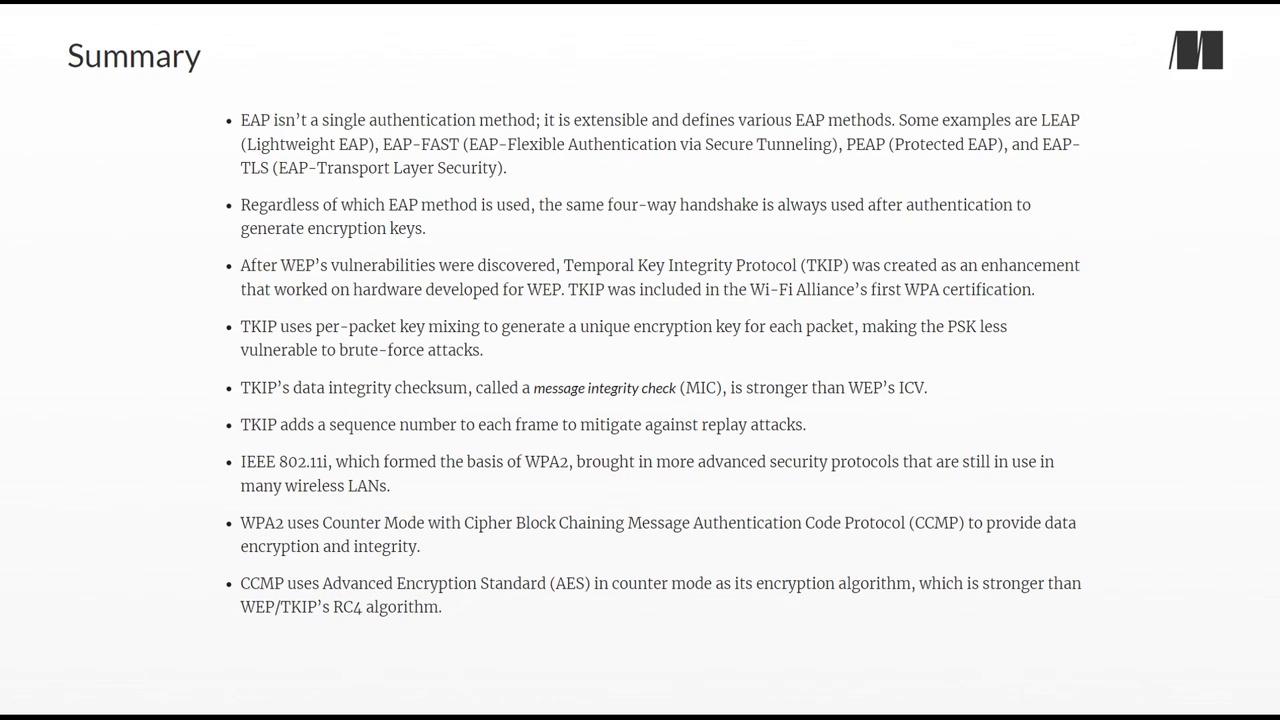001. Part 1. Network services
002. Chapter 1. Cisco Discovery Protocol and Link Layer Discovery Protocol
003. Chapter 1. Link Layer Discovery Protocol
004. Chapter 1. Summary
005. Chapter 2. Network Time Protocol
006. Chapter 2. How NTP works
007. Chapter 2. Configuring NTP
008. Chapter 2. Summary
009. Chapter 3. Domain Name System
010. Chapter 3. DNS on Cisco IOS
011. Chapter 3. Summary
012. Chapter 4. Dynamic Host Configuration Protocol
013. Chapter 4. DHCP relay
014. Chapter 4. Client OS IP settings
015. Chapter 4. Summary
016. Chapter 5. Secure Shell
017. Chapter 5. Remote management
018. Chapter 5. Secure Shell
019. Chapter 5. Summary
020. Chapter 6. Simple Network Management Protocol
021. Chapter 6. SNMP messages
022. Chapter 6. SNMP versions and security
023. Chapter 6. Summary
024. Chapter 7. Syslog
025. Chapter 7. The Syslog message format
026. Chapter 7. Summary
027. Chapter 8. Trivial File Transfer Protocol and File Transfer Protocol
028. Chapter 8. File Transfer Protocol
029. Chapter 8. Upgrading Cisco IOS
030. Chapter 8. Summary
031. Chapter 9. Network Address Translation
032. Chapter 9. NAT concepts
033. Chapter 9. Types of NAT
034. Chapter 9. Summary
035. Chapter 10. Quality of service
036. Chapter 10. QoS concepts
037. Chapter 10. Classification and marking
038. Chapter 10. Queuing and scheduling
039. Chapter 10. Policing and shaping
040. Chapter 10. Congestion avoidance
041. Chapter 10. Summary
042. Part 2. Security fundamentals
043. Chapter 11. Security concepts
044. Chapter 11. Common threats
045. Chapter 11. Passwords and alternatives
046. Chapter 11. User access control with AAA
047. Chapter 11. Firewalls and IPS
048. Chapter 11. Summary
049. Chapter 12. Port Security
050. Chapter 12. Port Security configuration options
051. Chapter 12. Summary
052. Chapter 13. DHCP Snooping
053. Chapter 13. DHCP Snooping
054. Chapter 13. Summary
055. Chapter 14. Dynamic ARP Inspection
056. Chapter 14. Dynamic ARP Inspection
057. Chapter 14. Summary
058. Part 3. Network architectures
059. Chapter 15. LAN architectures
060. Chapter 15. Campus LAN architectures
061. Chapter 15. Data center architectures spine-leaf
062. Chapter 15. SOHO networks
063. Chapter 15. Summary
064. Chapter 16. WAN architectures
065. Chapter 16. Internet connections
066. Chapter 16. Internet VPNs
067. Chapter 16. Summary
068. Chapter 17. Virtualization and cloud
069. Chapter 17. Virtual Routing and Forwarding
070. Chapter 17. Cloud computing
071. Chapter 17. Summary
072. Part 4. Wireless LANs
073. Chapter 18. Wireless LAN fundamentals
074. Chapter 18. Radio frequency
075. Chapter 18. Service sets
076. Chapter 18. Additional AP operational modes
077. Chapter 18. Summary
078. Chapter 19. Wireless LAN architectures
079. Chapter 19. AP architectures
080. Chapter 19. Summary
081. Chapter 20. Wireless LAN security
082. Chapter 20. Wireless client authentication
083. Chapter 20. Wireless encryption and integrity
084. Chapter 20. Wi-Fi Protected Access
085. Chapter 20. Summary
086. Chapter 21. Wireless LAN configuration
087. Chapter 21. WLC ports and interfaces
088. Chapter 21. Configuring WLANs
089. Chapter 21. Summary
090. Part 5. Network automation
091. Chapter 22. Network automation
092. Chapter 22. Software-defined networking
093. Chapter 22. Artificial intelligence and machine learning
094. Chapter 22. Summary
095. Chapter 23. REST APIs
096. Chapter 23. HTTP
097. Chapter 23. REST APIs
098. Chapter 23. Summary
099. Chapter 24. Data formats
100. Chapter 24. JSON
101. Chapter 24. XML and YAML
102. Chapter 24. Summary
103. Chapter 25. Ansible and Terraform
104. Chapter 25. Configuration management tools
105. Chapter 25. Summary
106. Appendix C. Chapter quiz questions
107. Appendix D. Chapter quiz answers



